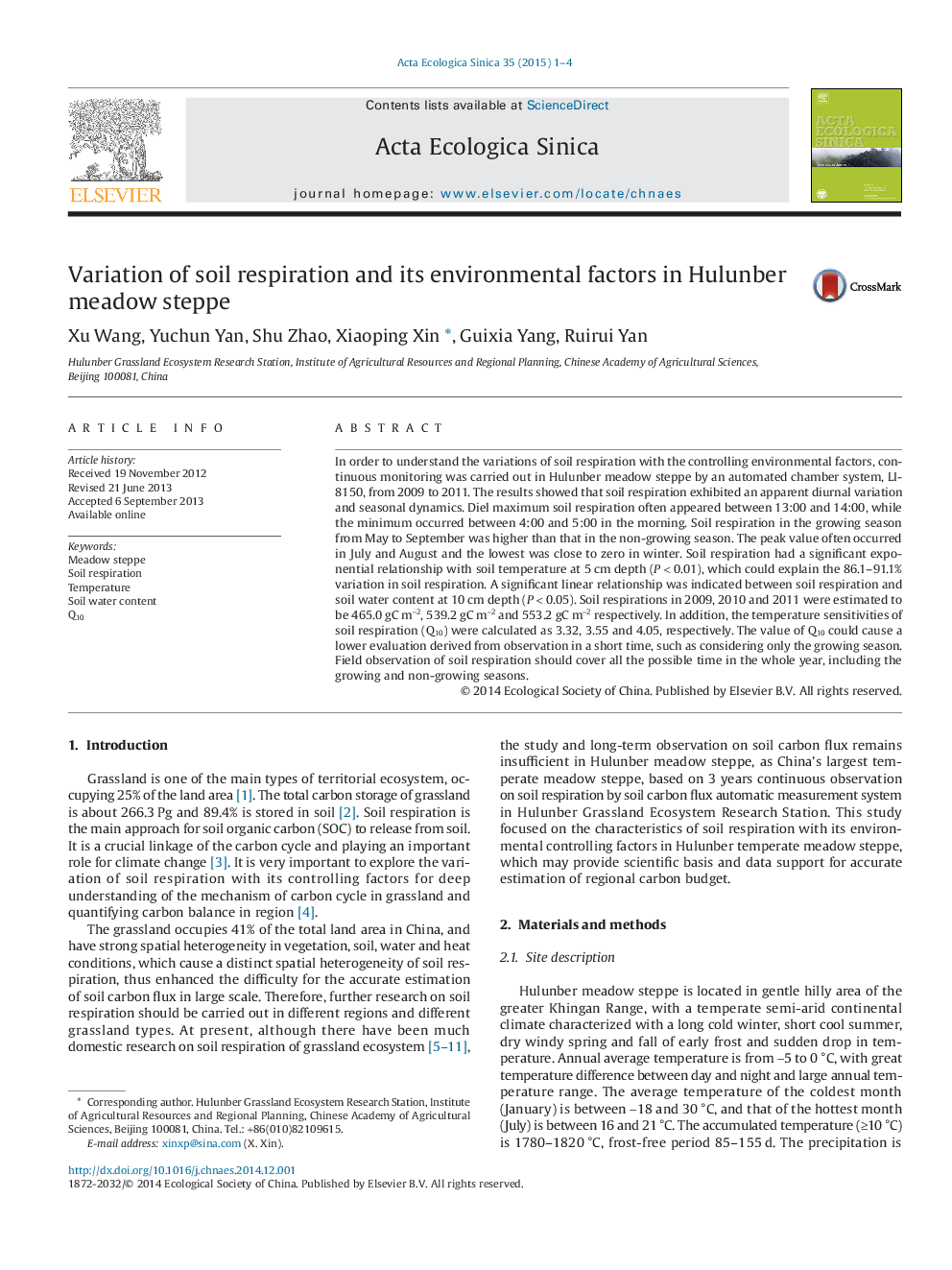| Article ID | Journal | Published Year | Pages | File Type |
|---|---|---|---|---|
| 4379806 | Acta Ecologica Sinica | 2015 | 4 Pages |
In order to understand the variations of soil respiration with the controlling environmental factors, continuous monitoring was carried out in Hulunber meadow steppe by an automated chamber system, LI-8150, from 2009 to 2011. The results showed that soil respiration exhibited an apparent diurnal variation and seasonal dynamics. Diel maximum soil respiration often appeared between 13:00 and 14:00, while the minimum occurred between 4:00 and 5:00 in the morning. Soil respiration in the growing season from May to September was higher than that in the non-growing season. The peak value often occurred in July and August and the lowest was close to zero in winter. Soil respiration had a significant exponential relationship with soil temperature at 5 cm depth (P < 0.01), which could explain the 86.1–91.1% variation in soil respiration. A significant linear relationship was indicated between soil respiration and soil water content at 10 cm depth (P < 0.05). Soil respirations in 2009, 2010 and 2011 were estimated to be 465.0 gC m−2, 539.2 gC m−2 and 553.2 gC m−2 respectively. In addition, the temperature sensitivities of soil respiration (Q10) were calculated as 3.32, 3.55 and 4.05, respectively. The value of Q10 could cause a lower evaluation derived from observation in a short time, such as considering only the growing season. Field observation of soil respiration should cover all the possible time in the whole year, including the growing and non-growing seasons.
